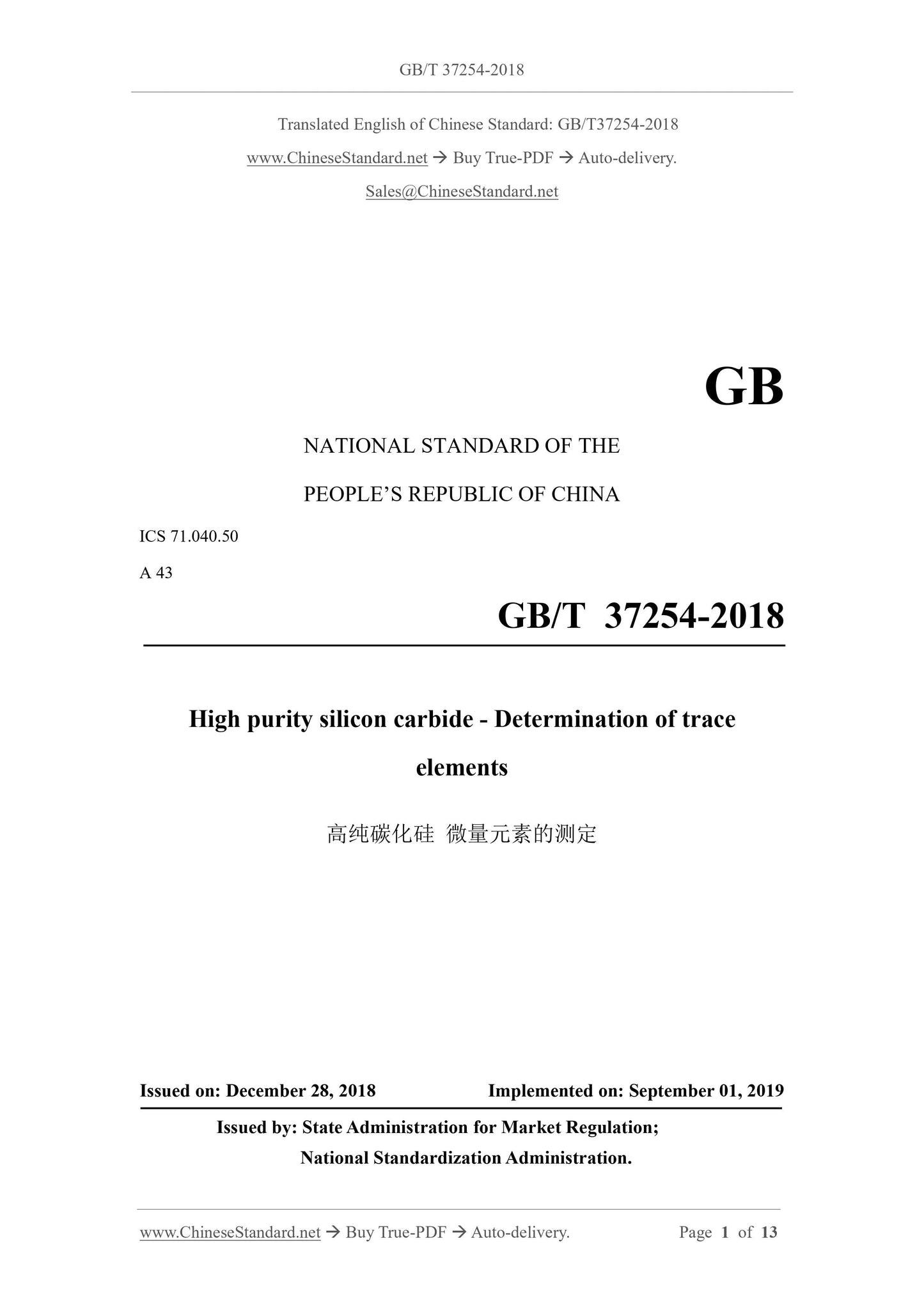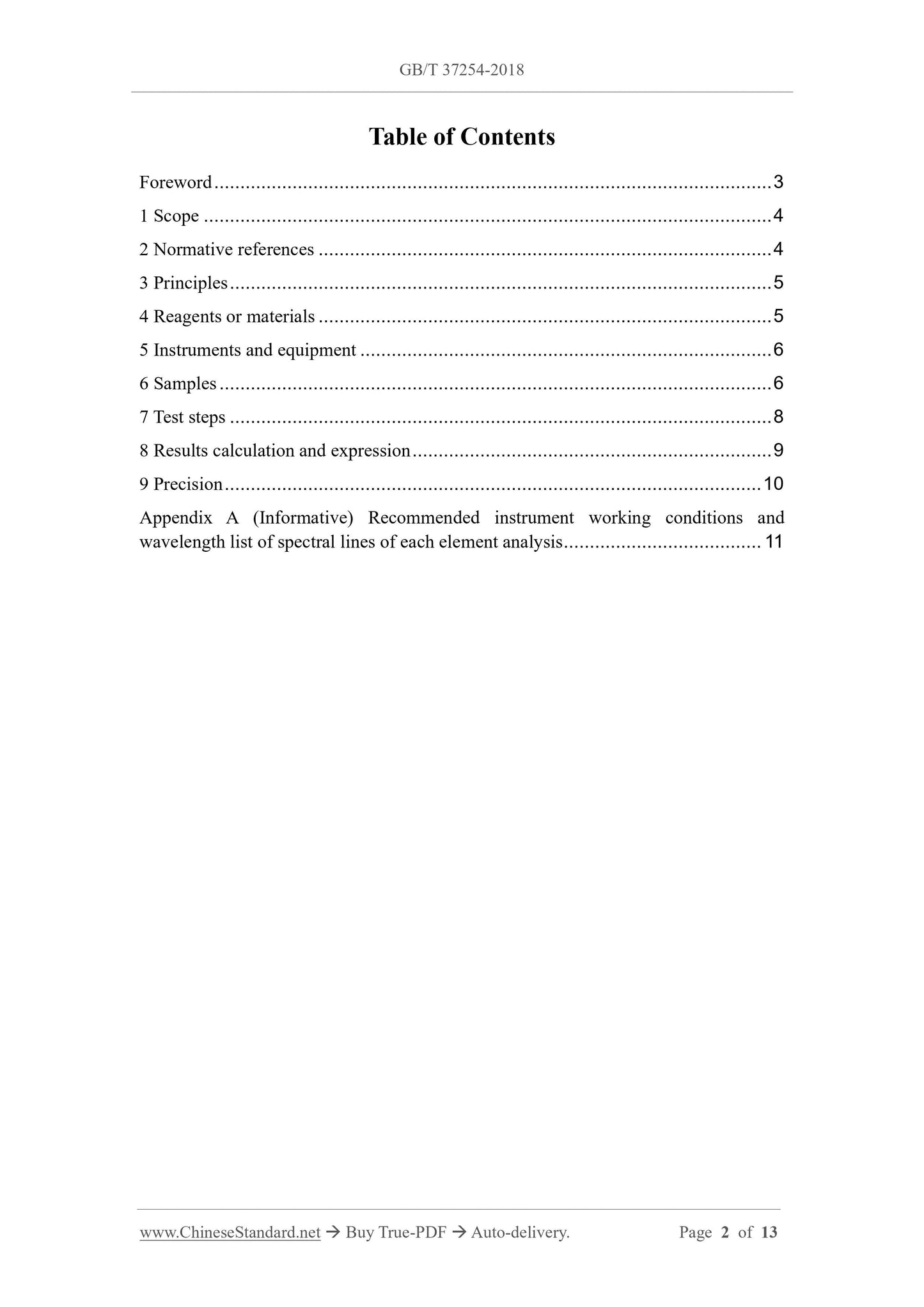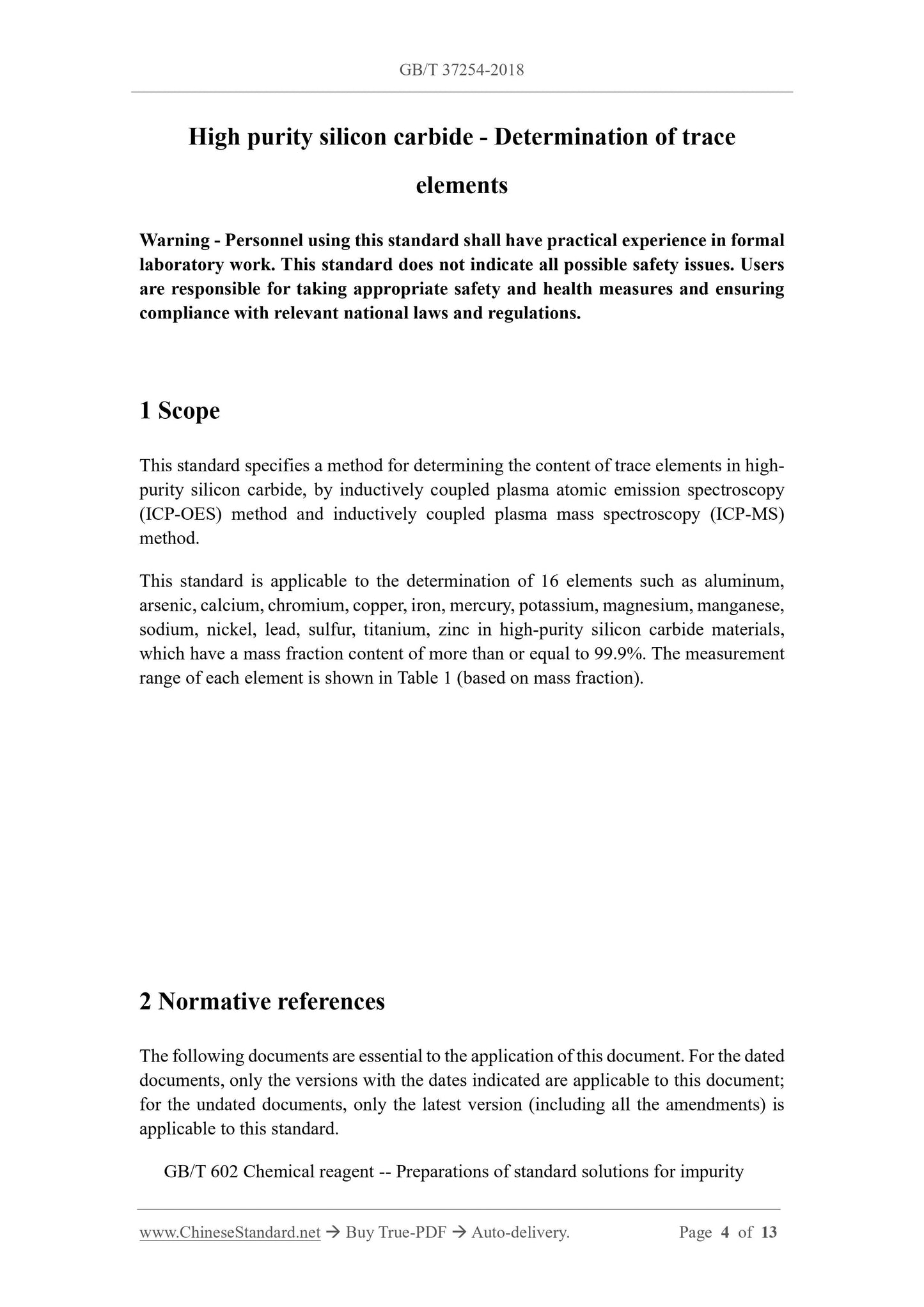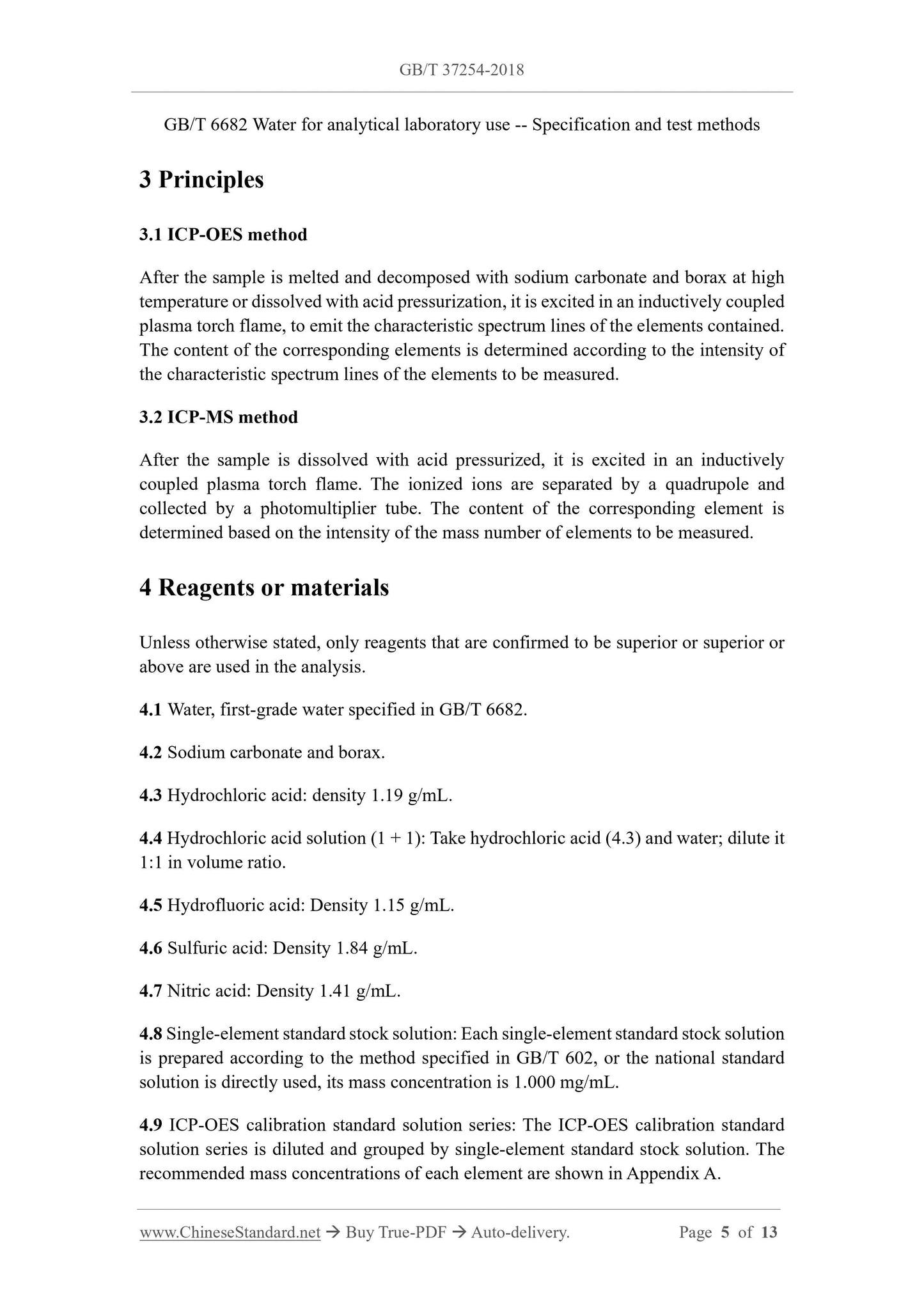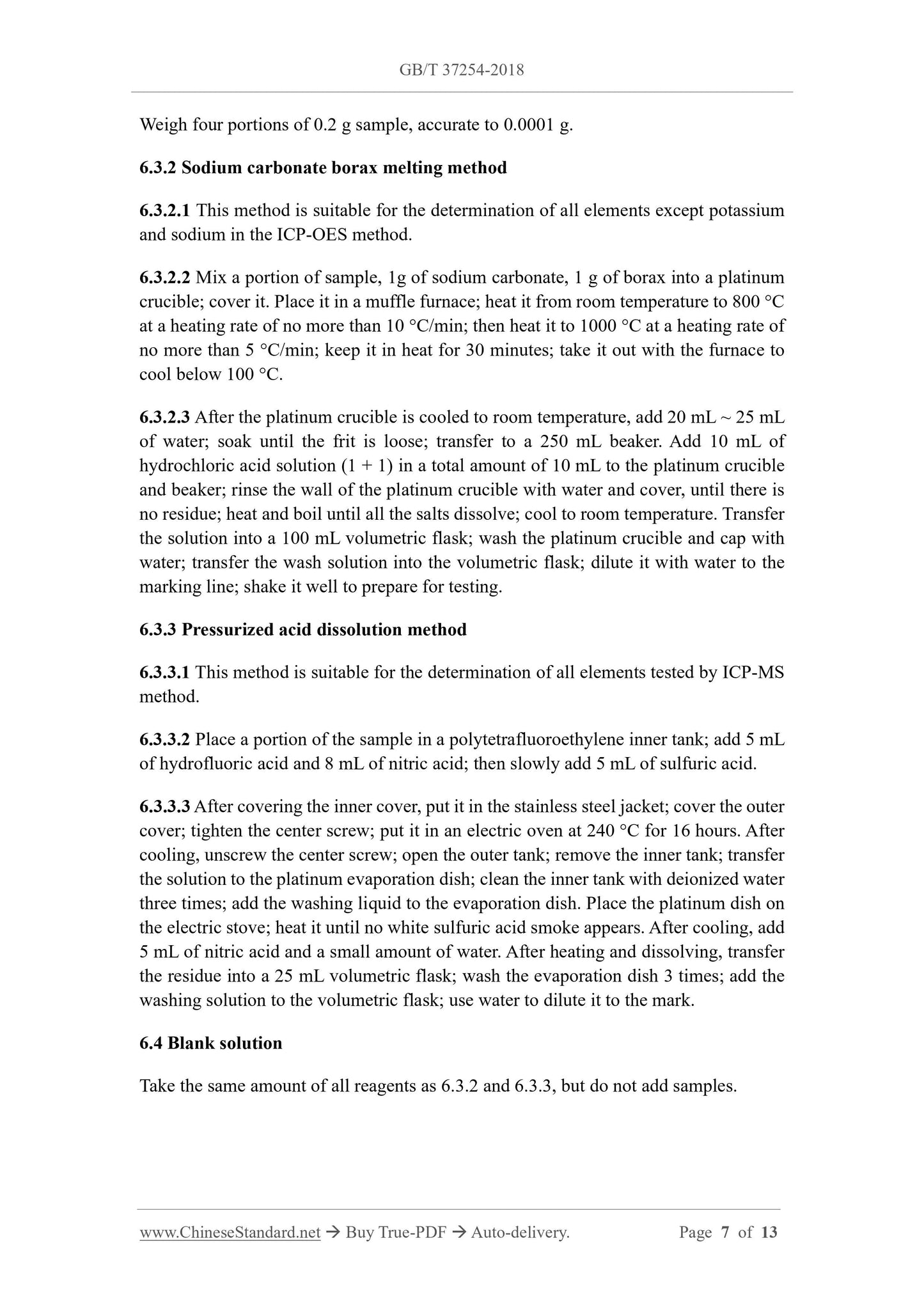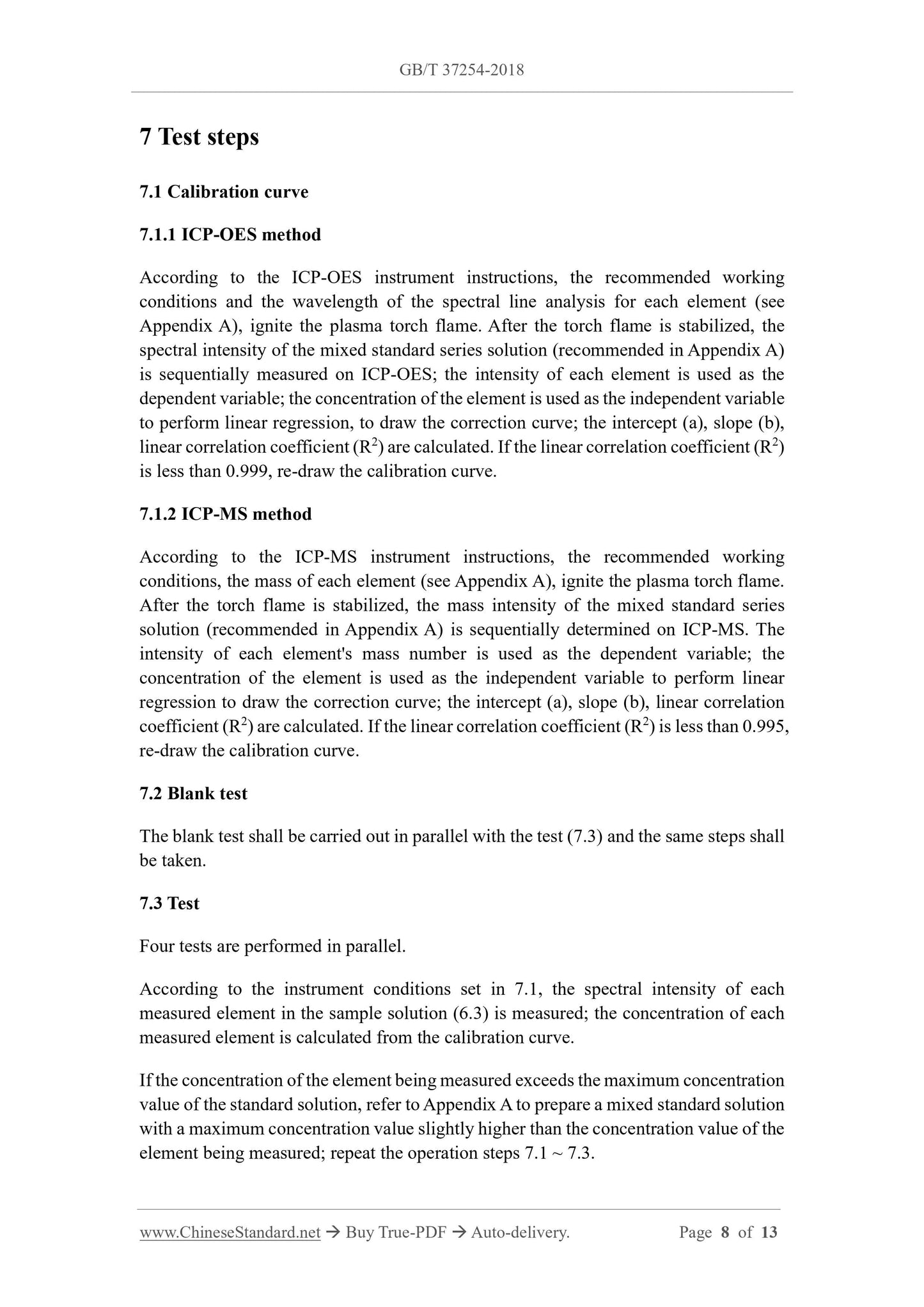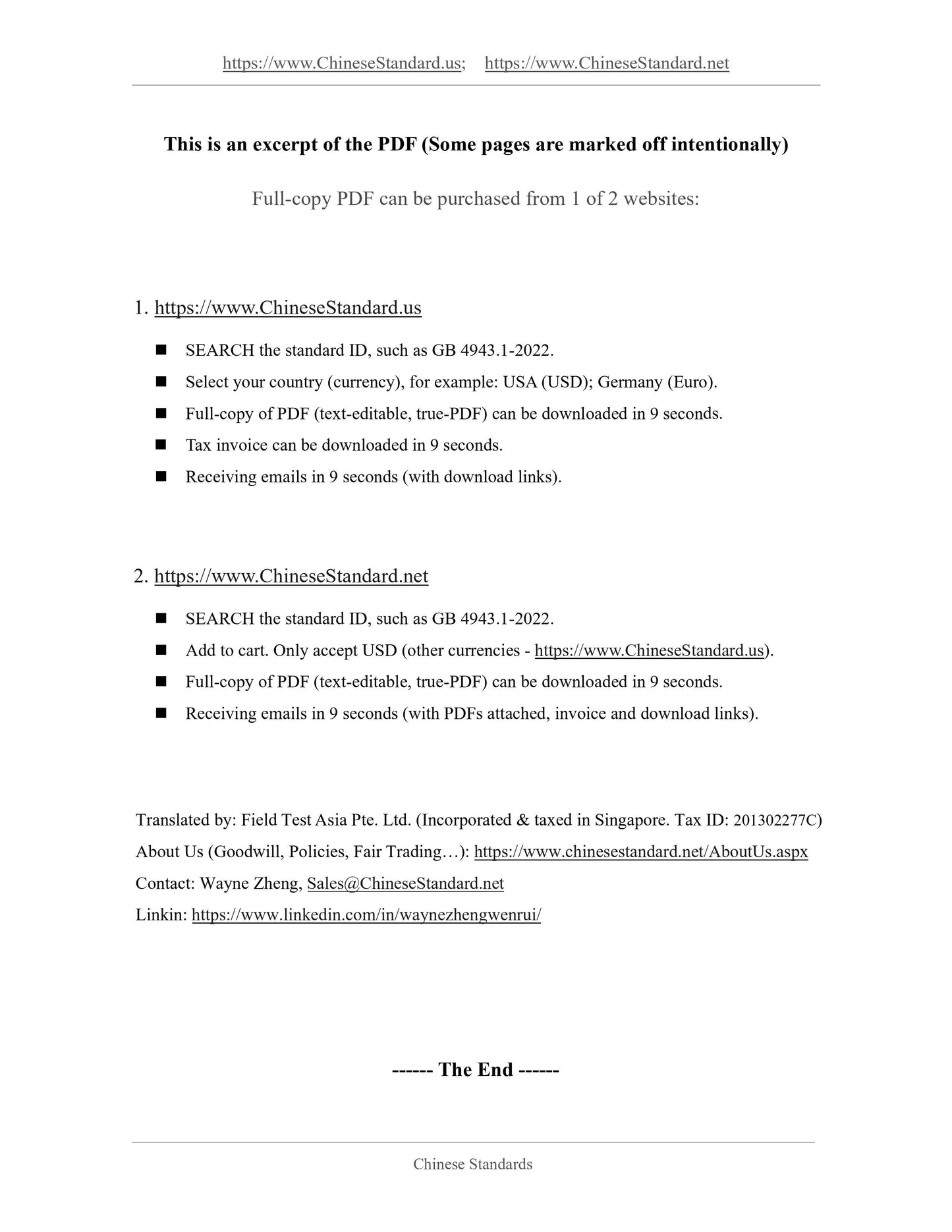1
/
of
7
www.ChineseStandard.us -- Field Test Asia Pte. Ltd.
GB/T 37254-2018 English PDF (GB/T37254-2018)
GB/T 37254-2018 English PDF (GB/T37254-2018)
Regular price
$145.00
Regular price
Sale price
$145.00
Unit price
/
per
Shipping calculated at checkout.
Couldn't load pickup availability
GB/T 37254-2018: High purity silicon carbide -- Determination of trace elements
Delivery: 9 seconds. Download (and Email) true-PDF + Invoice.Get Quotation: Click GB/T 37254-2018 (Self-service in 1-minute)
Newer / historical versions: GB/T 37254-2018
Preview True-PDF
Scope
This standard specifies a method for determining the content of trace elements in high-purity silicon carbide, by inductively coupled plasma atomic emission spectroscopy
(ICP-OES) method and inductively coupled plasma mass spectroscopy (ICP-MS)
method.
This standard is applicable to the determination of 16 elements such as aluminum,
arsenic, calcium, chromium, copper, iron, mercury, potassium, magnesium, manganese,
sodium, nickel, lead, sulfur, titanium, zinc in high-purity silicon carbide materials,
which have a mass fraction content of more than or equal to 99.9%. The measurement
range of each element is shown in Table 1 (based on mass fraction).
Basic Data
| Standard ID | GB/T 37254-2018 (GB/T37254-2018) |
| Description (Translated English) | High purity silicon carbide -- Determination of trace elements |
| Sector / Industry | National Standard (Recommended) |
| Classification of Chinese Standard | A43 |
| Classification of International Standard | 71.040.50 |
| Word Count Estimation | 9,975 |
| Date of Issue | 2018-12-28 |
| Date of Implementation | 2019-09-01 |
| Regulation (derived from) | National Standard Announcement No. 17 of 2018 |
| Issuing agency(ies) | State Administration for Market Regulation, China National Standardization Administration |
Share
